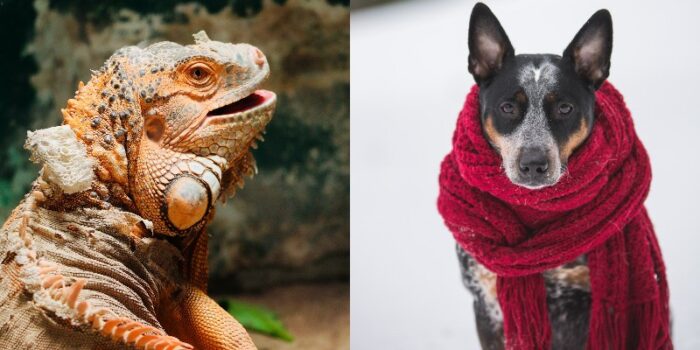
You might have heard the phrase “cold-blooded” used to describe a person, which means they are deliberately cruel and not literally that their blood is cold.
But it’s not just a saying. Cold-blooded and warm-blooded creatures make up the animal kingdom. It’s not about the actual temperature of their blood but the body’s temperature and the biological process associated with it.
So why are some animals cold-blooded and others warm-blooded? And what’s the difference? Let’s find out.
Warm-blooded animals – mammals and birds – can maintain a constant internal body temperature, irrespective of their surroundings. These animals are called Endotherms. For example, humans are warm-blooded, which can be proved by your body’s ability to maintain a certain temperature within itself, even when you’re standing on a snow-capped mountain or a beach in summer.
Cold-blooded animals or Ectotherms are animals that can’t maintain a temperature by themselves and rely on the environment to help regulate their temperatures. Most reptiles, amphibians, fish and some insects fall into this category.
There is also a third category of animals – Heterotherms. These animals have qualities of both ectotherms and endotherms, wherein they can regulate their body temperature that agrees with different environments. Bumblebees, bats, and hummingbirds are examples of heterotherms.
Our body temperature is a result of our metabolism or the process by which the body produces energy that we use to survive and move our limbs, digest food, talk, and think. Endotherms need this energy to live; hence, maintaining a warmer temperature is essential for them. This is also why mammals and birds need to eat throughout the day – we metabolise the food we eat and get energy from it.
Endotherms also give off heat as they use up energy in the form of burning fat and sweating. They also have mechanisms to conserve body temperature through the use of hair, fur, and feathers. For example, Whenever you shiver in the cold, it’s your body’s way of generating heat and raising body temperature.
On the other hand, Ectotherms depend entirely on their surroundings to feel warm or cold. You may have seen some insects and lizards sitting still in the sun during the day. That is because they’re using the heat from the sun to energise their bodies in order to move and eat. During the winter, when there is little sun and food is harder to find, ectotherms enter a state of torpor or hibernation that slows down their metabolism as they don’t have enough external heat to produce energy.
Now that you know all about cold and warm-blooded animals, which one do you think is better? Let us know in the comments.
Learn more about animals in BYJU’S ‘Did You Know?’ section:
Jungle Games: How & Why Animals Play
Why do Animals Have Differently-Shaped Pupils? The Science Behind Different Types of Animal Eyes
Madhavi is passionate about everything to do with books, art, literature, films, trivia and food. A former journalist, she believes that asking questions makes life interesting.